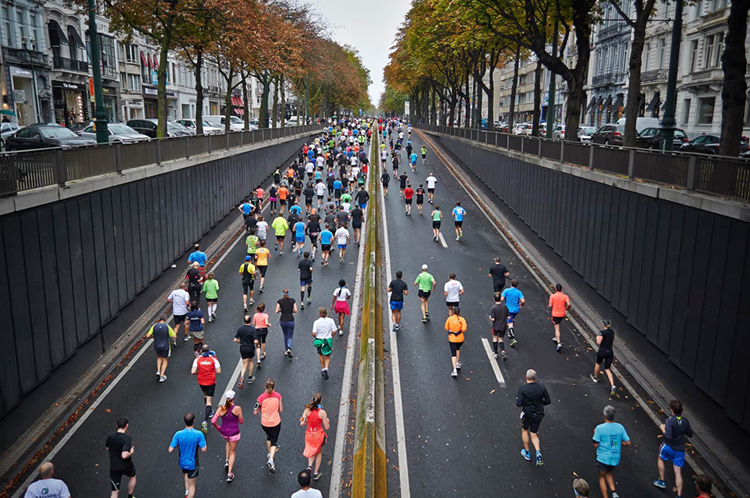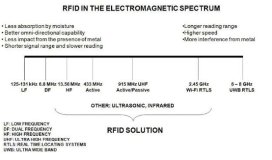The two systems of measurement we’ll discuss are race chip timing and gun timing. Counter-intuitive to what you may think, the least accurate of the two times, gun timing, is typically considered your official race time and is the basis for any awards given out to participants.
Chip Timing

Race chip timing systems use RFID transponder chips to precisely measure racers’ times. Race participants wear the RFID tags during the race. The type of RFID tag varies on the system being used, but they range from shoelace tags, ankle bracelets, to the more common disposable race bibs with an affixed UHF RFID tag.
Chip timing is able to precisely measure your race results by registering your race chip as you run across RFID timing mats located throughout the race course. Your individual clock starts as soon as you pass over the mats located at the starting line, and likewise ends as you cross the mats at the finish line. Larger races will have mats at checkpoints throughout the race giving organizers the ability to measure split times.
As you run across an RFID timing mat, the antenna within the mat emits an electromagnetic wave energizing the RFID chip, which then responds with a unique identification number associated with your race bib number. An RFID reader interprets and sends the information to a computer with the process repeating itself at each mat. Because this method tracks the actual time recorded at the starting line minus the time at the finish line, it is often referred to as net time. Net time has been effective in reducing crowding at the chutes by being able to measure individual times in large crowds. Also, it has been credited with reducing cheating as racers must cross all the checkpoints.

Gun Timing
The traditional and USATF sanctioned method of timing races, gun timing starts the race clock for everyone at the initial pistol shot. Regardless of when you actually crossed the starting line, the time from pistol shot to finish line will be your official time.
The reasoning behind sticking to this inaccurate timing method boils down to an attempt to uphold the integrity of competition. The individual at the head of the pack needs to be perceived as being in first place so that competitors can strategically pace themselves and set up a final kick at the end. Likewise, the individual in first needs to be able to protect their position at the front.
How does it affect the results?
In smaller races, the discrepancy between net time and gun time is minimal; however, in large races, it may take up to ten minutes before a participant actually crosses the starting line. In order to give the best racers an opportunity to post an overall winning time, they are typically placed at the front of the pack so that they have a more accurate time and don’t have to work their way through crowds. For categories such as age and gender, net time is typically used in lieu of gun time as it provides an accurate race result regardless of starting position.
Even though chip timing is far superior technologically, gun timing still has a place in racing, although it’s now the norm to employ both systems simultaneously.


